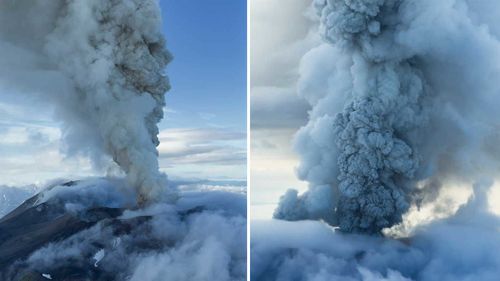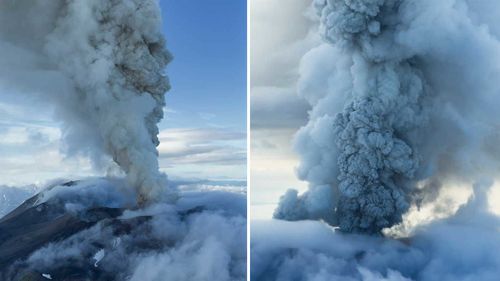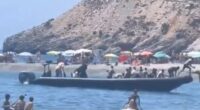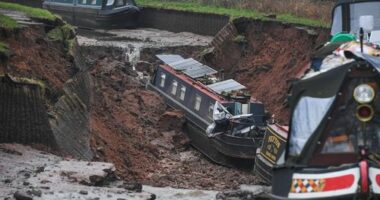Share this @internewscast.com
A volcano on Russia’s remote Kamchatka Peninsula has erupted for what scientists believe is the first time in centuries, just days following a powerful 8.8-magnitude earthquake.
The Krasheninnikov volcano emitted ash six kilometers high, as reported by staff from the Kronotsky Reserve, where the volcano is situated. State media released images displaying thick ash clouds billowing from the volcano.
“The ash plume is moving eastward toward the Pacific Ocean. Fortunately, it is not passing over any populated areas, and no ashfall has been detected in inhabited regions,” stated Kamchatka’s emergencies ministry on Telegram during the eruption.

The eruption was accompanied by a 7.0-magnitude earthquake and prompted a tsunami warning for three areas of Kamchatka.
The tsunami warning was later lifted by Russia’s Ministry for Emergency Services.
Olga Girina, leader of the Kamchatka Volcanic Eruption Response Team, informed Russian state news agency RIA Novosti, “This marks the first confirmed eruption of the Krasheninnikov volcano in 600 years.”
Conversely, the Smithsonian Institution’s Global Volcanism Program, based in the United States, records the last eruption of Krasheninnikov as having taken place 475 years ago, in 1550.
The reason for the discrepancy was not clear.
The Kamchatka Volcanic Eruption Response Team announced late Sunday that while the volcano’s activity was decreasing, some “moderate explosive activity” might still continue.
The eruption occurred after a huge earthquake struck Russia’s Far East early Wednesday, an 8.8-magnitude temblor that caused small tsunami waves in Japan and Alaska and prompted warnings for Hawaii, North and Central America and Pacific islands south toward New Zealand.















